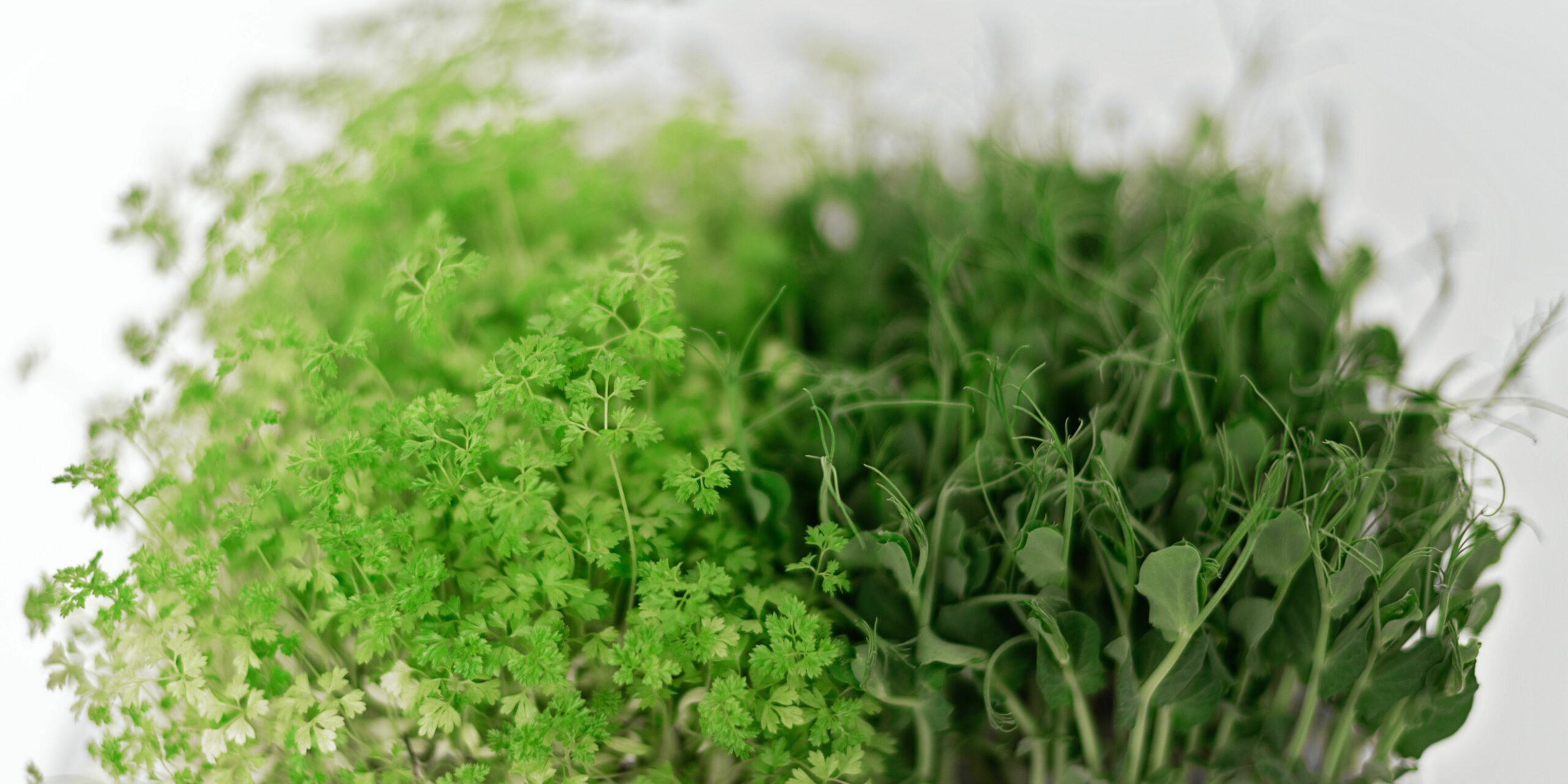5 Best Microgreens For Kitchen Gardening
Want to enjoy the freshness and nutrition of homegrown veggies but don’t have the patience to wait for months or enough space to grow them at home? Then microgreens are the perfect solution for you. Microgreens are nothing but young seedlings grown from the seeds of herbs, legumes, or spices. They can be harvested in a few weeks when the seedlings reach a height of 3-4 inches. Packed with vitamins, minerals, antioxidants, and flavor, they can be grown indoors all year round with minimal space and equipment.
Here are the 5 best microgreens for kitchen gardening that are easy to grow, delicious to eat, and rich in nutrients.
1. Mustard Microgreen

Mustard microgreens are one of the easiest microgreens to grow and can be harvested in 2 weeks. They are rich in carbohydrates, protein, fiber, folate, Vitamin B6, A, C, E, and K, calcium, iron, sodium, and antioxidants. The seeds germinate very fast and can be sown without any presoaking.
To grow mustard microgreens, sprinkle the seeds on a shallow tray with a layer of soil and drainage holes. Now cover it with another tray to block the light as they need to be kept in the dark till they germinate. The seeds take 2-3 days to germinate. Once the seedlings are visible keep them in a sunny corner for proper growth and green color. You can harvest them between 5 to 14 days using sharp scissors.
2. Wheatgrass Microgreen

Wheatgrass is a popular superfood grown from wheat grains. It’s yet another easy-to-grow microgreen making it ideal for beginners. It’s commonly consumed as wheatgrass juice and also added to smoothies and salads to enhance their nutritional value. It’s not only tasty but has antioxidant, anti-inflammatory, and anti-cancerous properties. Regular intake of wheatgrass also helps regulate blood sugar levels and promotes weight loss.
For growing them at home presoak the grains at least 12 hours before sowing. Spread the soaked grains on a tray with a layer of potting mix, sprinkle some water, and cover it with another tray for 2-3 days till the tiny seedlings are visible. Once germinated uncover the tray, put it in a sunny spot, and mist it every day. You can start harvesting the microgreens once they are 6 inches tall. The best thing about wheatgrass microgreens is that, unlike others, they can be harvested 2 to 3 times. Just cut the top 3 inches of wheatgrass and it will grow again.
3. Radish Microgreen

Radish microgreens have a spicy and peppery taste that adds a kick to your salads and sandwiches. They are loaded with vitamin C, potassium, and phytochemicals that have anti-inflammatory and anti-cancerous properties.
To grow them, you need to sprinkle the seeds on a tray with moist soil or paper towels. They need light to germinate, so keep them uncovered. Place them near a sunny window and mist them daily to keep them moist. Harvest them when they are about 2 inches tall by cutting them with scissors.
4. Peas Microgreen

Pea microgreens have a sweet and fresh flavor that resembles snap peas. They are packed with vitamins and minerals such as vitamins A, C, and K, folate, calcium, iron, and fiber. Including them in the daily diet can greatly improve immunity and eye and cardiovascular health.
To grow them, you need to soak the seeds for 24 hours and then drain them. Place them on a tray with moist paper towels or a thin layer of soil. Cover them with another tray or a paper towel to keep them moist until they sprout. Then, uncover them and place them near a sunny window. Harvest them when they are about 4 inches tall by cutting them with scissors.
5. Amaranth Microgreens

Amaranth microgreens are grown from the seeds of Garnet Red Amaranth and are used in various soups, salads, and sauces. They are rich in carbohydrates, protein, folate, vitamins K, A, C, and E, iron, calcium, zinc, manganese, and magnesium. Eating them regularly can ensure healthy bones and skin. They are helpful in the early healing of wounds.
For growing them at home spread the seeds on a tray with a layer of potting mix or simply cocopeat, they don’t require any presoaking. Press the seeds gently inside the soil, mist them, and then cover the tray and keep it in a dark place at room temperature. Seeds germinate in 2-3 days, after that keep them in indirect sunlight, misting them every day. They can be harvested between 8-12 days.
Here are some other blogs which make your Green Space Greener!
- Gardening Calender Blogs
- Sustainable Gifting Ideas
- Gardener Stories
- Garden Care Blogs
- Miniature Garden Decor
- Gardening Workshops
Have a look at some amazing Videos on Gardening that might help you!
- Tips on planting homegrown plants and creating art with them as a beginner.
- How to preserve, plant, and grow flower seeds in monsoon, winter, and other seasons.
- Growing different vegetables, winter vegetables especially, and tips and tricks to preserve.
- Preserving fruits such as strawberries, Papaya, watermelon, muskmelon, etc.
- Know all about microgreens using examples such as microgreen spinach, microgreen sunflower, microgreen mustard, microgreen flax, etc.
- Using gardening tools such as pots, trays, growing bags, moss sticks, watering cans, etc.
Here are some Workshops that might help you if you are new to Gardening!
- Learn how to propagate plants.
- Know more about growing medicinal plants and herbs.
- Workshop on A to Z of Microgreens.
- Know about a few plants that you can grow in your kitchen.


Highly recommended for anyone looking to enhance their cooking with homegrown goodness
The variety pack is a game-changer for experimenting with different flavors
Perfect for urban gardening and elevating my culinary creations
So easy to grow and incredibly nutritious, my favorite kitchen addition
Absolutely love the freshness these microgreens add to my dishes